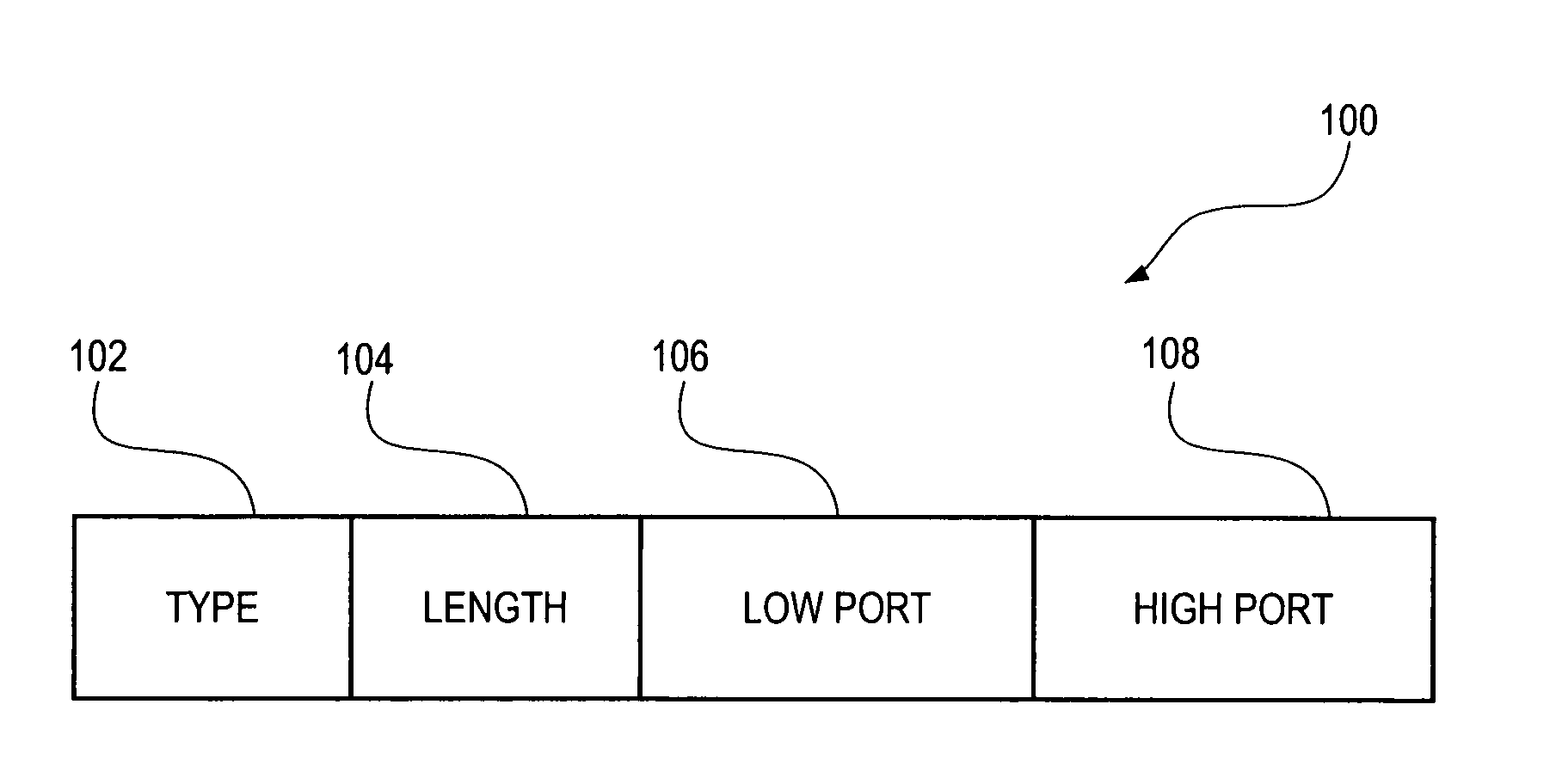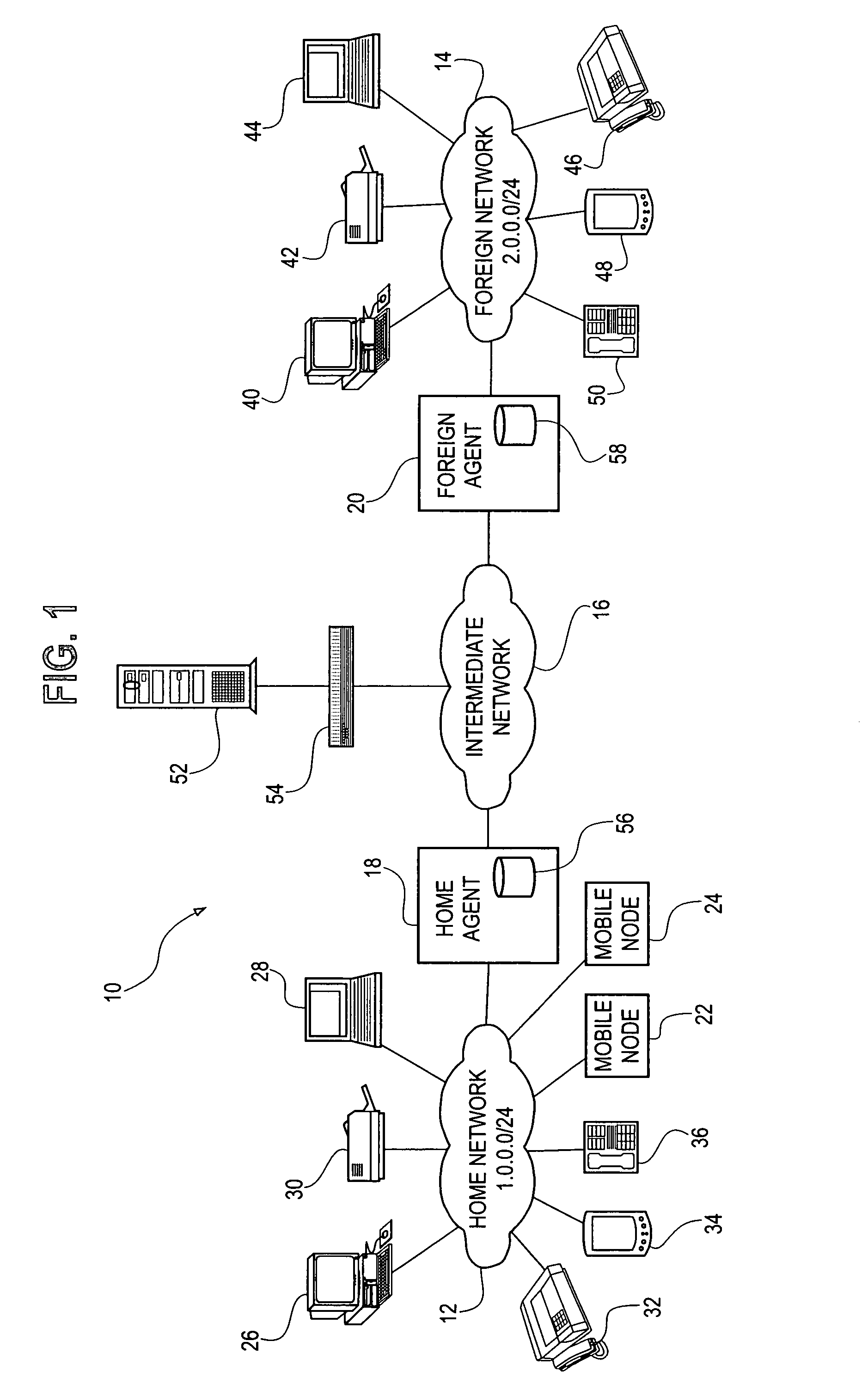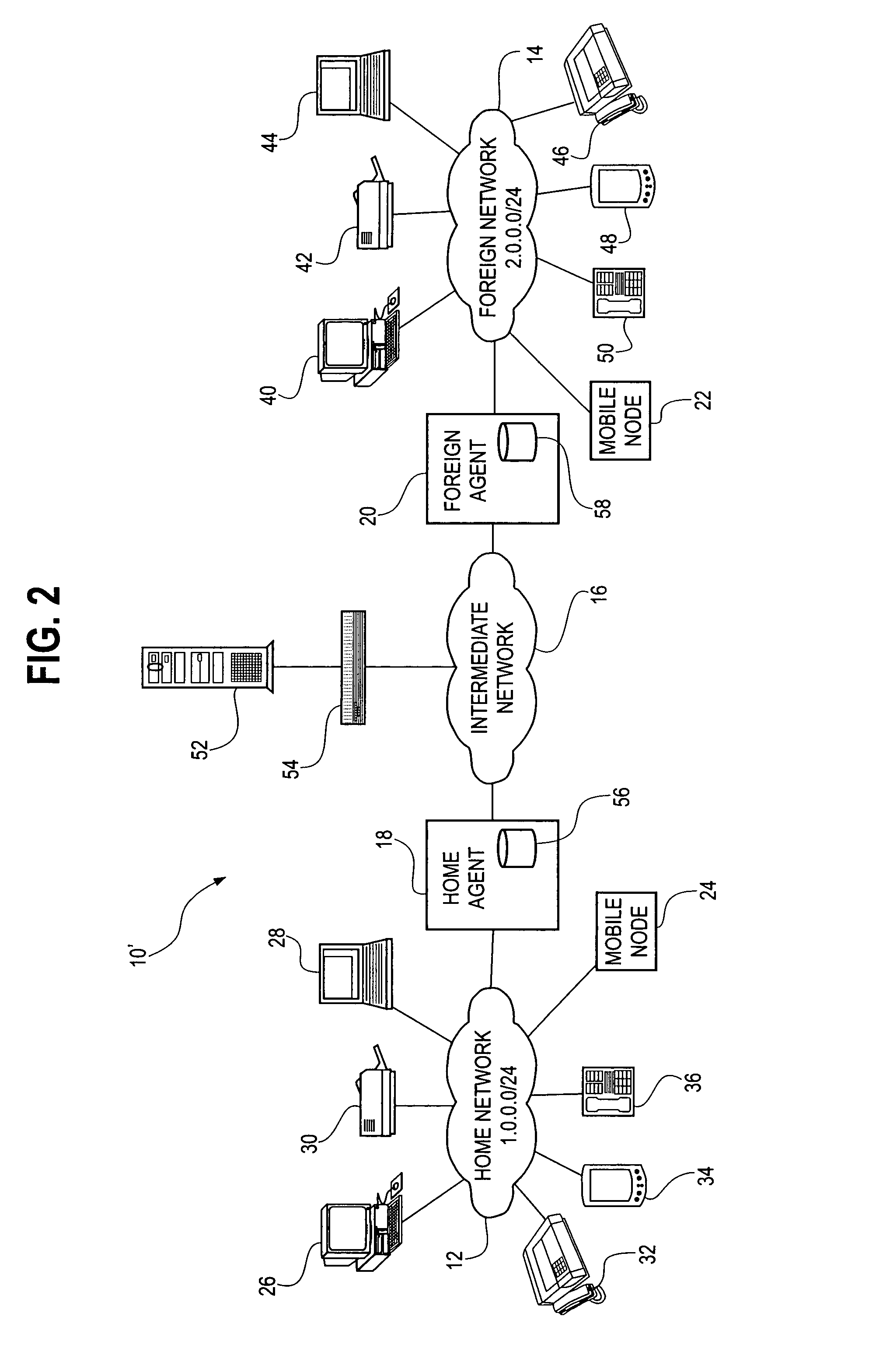Address management for mobile nodes
a mobile node and address management technology, applied in the field of computer networks, can solve the problems of increasing limitation, increasing inacceptability, and normal loss of communication ability using ip, and the number of available ip addresses using the 32-bit address field provided for by ipv4 becomes very limited
- Summary
- Abstract
- Description
- Claims
- Application Information
AI Technical Summary
Benefits of technology
Problems solved by technology
Method used
Image
Examples
Embodiment Construction
[0015]A. Exemplary Network Architecture FIG. 1 is a block diagram illustrating an exemplary architecture for network system 10, in accordance with a preferred embodiment of the present invention. Network system 10 includes a home network 12 and a foreign network 14. Home network 12 and foreign network 14 are able to communicate with one another, typically via an intermediate network 16. Intermediate network 16 is typically a wide area network, such as the Internet. Home network 12 is connected to intermediate network 16 via a home agent 18, which is typically the gateway router for home network 12. Similarly, foreign network 14 is connected to intermediate network 16 via a foreign agent 20, which is typically the gateway router for foreign network 14.
[0016]Mobile nodes 22 and 24 are connected to home network 12, which is the home network of these mobile nodes, via either wireline communication links or wireless communication links. Each of mobile nodes 22 and 24 is a mobile device t...
PUM
 Login to View More
Login to View More Abstract
Description
Claims
Application Information
 Login to View More
Login to View More - R&D
- Intellectual Property
- Life Sciences
- Materials
- Tech Scout
- Unparalleled Data Quality
- Higher Quality Content
- 60% Fewer Hallucinations
Browse by: Latest US Patents, China's latest patents, Technical Efficacy Thesaurus, Application Domain, Technology Topic, Popular Technical Reports.
© 2025 PatSnap. All rights reserved.Legal|Privacy policy|Modern Slavery Act Transparency Statement|Sitemap|About US| Contact US: help@patsnap.com



